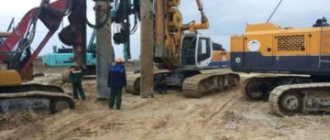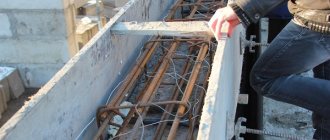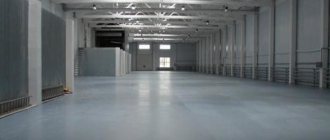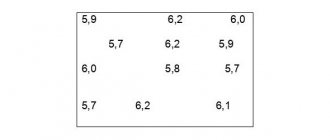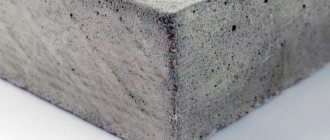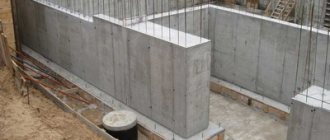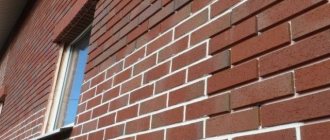The issue of delivering concrete to the pouring site on small construction sites is easily solved by using a wheelbarrow. But what to do if your construction is on a large scale, and it is impossible for a concrete mixer to reach the pouring point? Call a concrete pump!
A concrete pump is a type of construction equipment that supplies concrete mixture to the pouring site. This special equipment can supply concrete mixture at a distance and to a height of more than 20 meters. It also automates the workflow, saves time and improves the quality of installation.
There are different models of concrete pumps. Depending on the requests, builders choose a model that is suitable for its characteristics.
Problems that may arise when laying with concrete pumps
Although laying the mixture using concrete pumps is easier and faster than performing the same work without it, you need to take into account some features of using these mechanisms.
Let's list them:
- The increased speed of laying the mixture can lead to the formation of cavities inside the monolith, especially if a fine mesh is used for reinforcement. Therefore, you need to ensure that the concrete is evenly distributed.
- If compaction is carried out with surface rather than deep vibrators, then it is necessary not to get carried away with large volumes of the laid mixture. Be sure to compact each layer.
- It is necessary to carefully fix the reinforcement cage; a powerful flow of mixture from the concrete pipeline can displace the reinforcement elements and embedded parts.
A strong flow of concrete can dislodge the reinforcement cage
- When working with a high-capacity concrete pump, it is difficult for one or even two builders to hold the flexible end of the concrete pipeline. You should give preference to a boom or at least hang the pipes on a crane.
- Plugs formed in the concrete pipeline can damage it and the pump mechanisms. If it begins to form, try reversing the pump (if possible) for a short time. Otherwise, disconnect the area and clean the pipes by hand.
- In order not to contribute to the formation of traffic jams, do not take long breaks in work; during this time, some of the concrete may set. Make sure that all builders (sometimes it becomes necessary to leave, even for a short time) can be replaced immediately.
- At the end of concreting (or changing), both the pump itself and the concrete pipeline pipes must be thoroughly washed.
Methods of placing concrete pumps
The main difference between the units is the base options. There are automobile, mobile (mini) and stationary concrete pumps.
Automotive equipment
High mobility makes it possible to use this option even if construction is carried out on sites as far as possible from the benefits of civilization. This is a vehicle (usually a truck) that has a special platform on which a pumping station with a concrete pipeline already connected to it is securely fixed.
The main components of a concrete pump are a concrete receiving hopper and a boom. The last element is a steel pipe that has several sections called elbows. The length that such an arrow is capable of “rising” is 10-64 m. Its last element is connected to a flexible hose, in slang it is called a trunk. It makes it possible to direct a stream of solution to a given location. Before starting up the equipment, a certain amount of laitance or a special chemical (starting) solution is poured into it to lubricate the pipes.
Advantages of a truck-mounted concrete pump:
- maximum pumping length - up to 200 m, height - up to 70 m;
- maximum productivity (up to 90 cubic meters per hour);
- no need to find suitable transport;
- relative compactness of the station;
- Great maneuverability.
Flaws:
- expensive rent;
- insufficient feed height when compared with the “stationary” one.
Stationary concrete pumps
Such units are called stationary conventionally, since most of them still have the ability to move, but do not know how to move without assistance. The first example is a trailer on which a concrete pumping station is installed. It is transported using special equipment - a tractor.
Installing the unit on a separate site makes it possible to make the concrete pump more powerful, since the concrete pipeline - a long flexible hose - is installed directly on the construction site. This type of pump is used in the construction of multi-story buildings and high-rise buildings. Often, for more efficient operation, concrete pipes can be hung on a construction crane.
Completely stationary concrete pumps, which are installed on a permanent foundation, are a technique used in concrete factories. However, in these cases, belt conveyors or buckets are used, moved by cranes (gantry, bridge).
Advantages of stationary and “semi-stationary” trailed type:
- the ability to pump a very large amount of concrete mixture, when compared with concrete pumps (200 or more cubic meters per hour);
- the maximum solution supply distance is 300 m horizontally, 100 m vertically;
- different ways of supplying the solution: both horizontally and vertically;
- low price.
Minuses:
insufficient maneuverability; inability to quickly transport the unit; risk of damaging the hose due to careless or very frequent use.
On stationary units and on those installed on car trailers, piston systems are used, to which this type of equipment owes the highest performance.
Special concrete pumps
There are truck-mounted concrete pumps equipped with a mixer, but the maximum vertical pumping capacity of this type of equipment is small - only 30 m. There is another type of equipment - special, its tasks are far from being called trivial. For example, they produce mobile concrete pumps with caterpillar tracks. They are often used together with drilling machines. There is no replacement for such equipment for the construction of tunnels in mountainous areas.
Other examples are combined installations that produce and pump the solution, concrete pumps that have a hydraulic manipulator for spraying the mixture onto various surfaces. This list can be continued, since irreplaceable concrete mixtures are used very widely. Special equipment is being developed in Russia (Stroymash Center), Germany (Putzmeister AG), Italy (CIFA, Mecbo) and China (MITSUBER, XCMG).
Mobile mini-stations
This option is used when a relatively small amount of concrete is needed. Mini-pumps specialize in helping with the construction of small and medium-sized facilities. Its small size makes it easy to move the concrete pump around the site, making work quick and relatively easy.
However, for such super-maneuverability, mini-equipment pays with worse technical characteristics - maximum height and feed length. The first is 50 m, the second is 150. However, in private construction, these disadvantages, as a rule, are not disadvantages.
Moving concrete
The pump is in operation.
Delivering concrete to a construction site is not an easy task. Incorrect actions can significantly damage the quality of the mixture. Problems can be prevented by using a concrete mixer truck. A concrete mixing structure is attached to the vehicle chassis. The blades are welded inside the iron barrel. Rotating the barrel clockwise helps move the solution inward, and turning on the reverse process pushes the solution along the blades to the discharge hole.
Advantages of using a mixer:
- maintaining homogeneity, no stratification of the solution;
- constant movement of the solution, even with temporary delays, can maintain the technical characteristics of the composition.
The volume of the mixer barrel allows you to prepare or transport from 5 to 9 m³ of concrete mixture. To ensure that the finished product arrives at the construction site, the machine is equipped with a special loading tray. It is possible to use this type of transportation when the car can easily drive up to the construction site.
What to do when it is impossible to safely reach a built-up area? In this case, a pipeline is used, which belongs to special in-building equipment. Its technological advantages are undeniable:
- vertical, horizontal transportation using one mechanism;
- Easily reach hard to reach places.
Pipeline equipment – machines for supplying concrete or a separate type of construction equipment. The installation of separate equipment involves mounting a concrete pump on the base of a vehicle, using a full-rotating boom. This type of equipment allows you to transport the liquid mixture in a horizontal or vertical position for auxiliary structures.
Concreting floors in multi-story construction is impossible without the use of special equipment. The delivered solution is loaded via trays into the concrete pump receiver. Through a pipe consisting of three connected parts, the mixture is delivered to a height, to hard-to-reach places.
Return to contents
Concrete pump manufacturers
Manufacturers of concrete pumps from various countries currently produce a huge range of equipment for concreting. The choice of these machines is so huge that it is almost impossible to talk about linking this production industry to a specific geographic region.
However, there are quite pronounced regional preferences in this area. Thus, in the Russian and Ukrainian markets, for example, concrete pumps from European, South Asian and North American manufacturers mainly predominate, while in North America itself, preference is given to Chinese concreting technology.
At the same time, there are more and more Chinese-made cars on the Russian market, due to the following reasons:
- quite low, compared to Western European manufacturers, prices for supplied equipment;
- The models offered by Chinese manufacturers are similar to European models;
- Chinese concrete pumps are assembled mainly from components produced in Europe.
The most famous European manufacturers of concrete pumps are:
- German companies Reich Baumaschinen, ELBA-WERK, Schwing, Putzmeister;
- Italian companies MECBO, SERMAC, CIFA.
Manufacturers of stationary concrete pumps
If in 2010 the market for stationary concrete pumps in Russia was 50% filled with products from recognized factories: PUTZMEISTER CONCRETE PUMPS GMBH, CIFA SPA, Schwing Stetter, Liebherr, units from the Tuymazinsky plant, now the share occupied by Chinese equipment has increased significantly.
Let's take a short overview of equipment from leading manufacturers:
The manufacturer produces a wide range of installations with a power from 55 to 670 kW, a solution supply range to a height of up to 600 m and in a horizontal direction - up to 2 km, with a productivity of up to 100 m3/h. The Putzmeister stationary concrete pump is equipped with a diesel or electric motor.
Stationary concrete pump Putzmeister bsa 1409 d
CIFA.
The Italian manufacturer can offer 7 models equipped with diesel engines and 5 with electric motors, which are usually used in closed areas, for example, in tunnels. The productivity of concrete pumps varies from 30 to 140 m3/h.
Stationary concrete pump CIFA
MECBO.
Stationary concrete pump MECBO
Another Italian plant offers 6 types of concrete pumps with a capacity from 30 to 150 m3/h. The power of stationary models is not inferior to the power of mobile units, and their price is much more attractive.
For example, the characteristics of the most popular stationary concrete pump of the “MECBO” type: power - 150 hp, productivity - 65 m3/h, loading hopper capacity - 480 kg, pressure - 75 bar, installation weight - 4.1 tons.
For small objects, the company offers an interesting stationary unit, which is an attachment to the Bobcat loader and is powered by its engine. The model has a capacity of up to 22 m3/h and is capable of supplying concrete mortar 15 m in height and 75 m in the horizontal direction.
This oldest enterprise on our market offers a wide range of equipment with a productivity of up to 116 m3/h, characterized by excellent quality and operational reliability.
Stationary concrete pump sp 1800
The German company produces 5 brands of stationary concrete pumps: THS 80 D, THS 80 DH, THS 110 D, THS 140 D with a capacity of 71 to 135 m3/h, equipped with a diesel-hydraulic drive system, THS 70 E with an electro-hydraulic drive system and a capacity of up to 66 m3/h.
Liebherr electric concrete pump
Tuymazinsky concrete truck plant.
The company produces three models of stationary units: BN-20E with an electric drive, BN-20D and BN-70D with a diesel drive, with a capacity of 20 and 70 m3/h.
Unit produced by Tuymazinsky (Ryazan).
The plant produces equipment of the BN-25D, BN-25E, BN-40 and BN-80 brands, with a productivity of 25, 40 and 80 m3/h.
Ryazan installation
Among Chinese equipment, the most notable representatives on the Russian market are the Zoomlion and Sany Heavy Industry factories.
Recently, there has been a trend toward mergers between major concrete pump manufacturers. Thus, three conglomerates were formed: Cifa/Zoomlion, Sany/Putzmeister, XCMG/Schwing Stetter.
Buying a new stationary concrete pump is not always economically justified. It is often more profitable to rent equipment or buy used equipment.
Used stationary concrete pump SB 207 for rent
If you wish, you can make a primitive concrete pump with your own hands, which will do an excellent job in a suburban area. To do this, you can take a ready-made drawing as a basis. It is best to opt for the option with an electromechanical drive and a piston pump. This model will not hit your pocket hard during production.
A stationary concrete pump is one of those types of special equipment that greatly facilitate the process of erecting structures of any type made of concrete. The installation option is selected individually, based on the specifics of the object. The variety of concrete pump models on the market allows you to take into account all the necessary aspects.
Specifications
The concrete pump installed on the extended chassis of the domestic large-capacity four-axle vehicle KAMAZ-65115 6x4 has a set of technical characteristics that fully ensure the implementation of the entire range of tasks assigned to it.
In particular, supplying concrete with a concrete pump is possible to almost any construction site, which is ensured by the characteristics of the chassis of this vehicle, which has a turbocharged diesel engine and has a maximum net power of 280 hp.
The vehicle has good maneuverability and maneuverability, as evidenced by the following characteristics:
- maximum speed – 60 km/h;
- the amount of slope to be overcome is 25%;
- turning radius – 10.5 m.
The vehicle's high cross-country ability is also ensured by the presence of four axles, which allows it to produce less significant pressure on the road surface than, for example, a three-axle vehicle of the same mass. Model SANY SY5296THB 37 IIIB is a concrete pump also installed on a truck chassis.
The KS-5574BY truck crane under the ZUBR trademark is intended for work at dispersed sites, and galvanized pipelines combined with modern hydraulic devices significantly reduce the cost of servicing the cranes. Details can be found
The car has the following overall characteristics:
- total weight – 23,650 kg;
- concrete pump length – 10,300 mm;
- width – 2,500 mm;
- height – 3,900 mm.
The concrete pump itself, mounted on the chassis of a KAMAZ vehicle, has the following characteristics:
- maximum flow rate of concrete mass at the outlet of the concrete spreader (concrete pump capacity) – 90 m3/hour;
- number of sections – 4;
- maximum concrete supply height – 32 m;
- the pressure exerted by the concrete transport piston on the concrete mixture is 7.5 MPa;
- maximum size of filler elements – 50 mm;
- internal diameter in the concrete pipeline – 125 mm;
- loading funnel – 0.7 m3;
- loading height – 1,400 mm.
All manipulations with concrete delivered to the construction site, its supply and pouring with a concrete pump are carried out using a boom characterized by the following parameters:
Advantages and disadvantages of technology
The main advantage of using a mixer with a pump at a construction site is a significant reduction in costs and, accordingly, the cost of the building. Such a machine allows you to lay concrete at high heights, where it is not possible to do this from a tray. If you use the unit, you will be able to reduce the operating costs of the enterprise. Other advantages of this technique include:
- reducing time and costs for construction of facilities, speeding up the construction process by 2 times;
- the ability to work with fresh concrete, since the delivery process is reduced by 4-5 times;
- the mixer with a pump has relatively small dimensions, which allows it to be used even on small construction sites;
- mobility of work and ability to maneuver in limited areas;
- Possibility of operation regardless of climatic conditions.
But there are some disadvantages to using such machines:
- High cost of the unit. A car rental service will help solve this drawback.
- Difficulty in repairing, operating and maintaining high-tech equipment. You can reduce costs if you use cheaper analogues instead of original spare parts.
- Increased demands on service personnel. In addition to his immediate responsibilities, the driver must also be able to work with the complex equipment of a mixer with a pump.
- Discrepancy between the weight of the car and the volume of its tank.
- The need to equip concrete mixers with pumps with powerful electric drives.
Mixer with concrete supply pump Source specteh-kchr.speczakaz.info
Operating principle of a concrete pump
Range, height and depth of delivery
From the tray of the concrete mixer (concrete mixer, mixer), concrete or solution is gradually unloaded into the receiving hopper of the concrete pump. The pumping unit begins pumping the mixture through a concrete boom directly to the unloading point up to 70 m in height and up to 200 m in length. Concrete and mortar can be supplied not only along the boom of a concrete pump, but also extended with additional concrete pipes, the so-called route. The route is assembled on site from separate metal pipes connected with special clamps. At the end of this route, a rubber trunk is put on to distribute the concrete over the formwork. The length of the trunk is 4 meters. You can use two trunks to increase the maneuverability of concreting. If necessary, the route to the concrete pump can be connected without using a boom. Concrete lines are simply connected directly to the pumping unit. Application in the construction of buildings and structures made of monolithic concrete and reinforced concrete, construction of bridges, tunnels, etc.
Main characteristics
— The design of the concrete pump is designed for installation on a three-axle chassis; — Front outriggers with “X”-shaped extension for quick installation and ease of boom deployment in cramped conditions; — Independent frame with protection against torsional deformation; — Outriggers with hydraulic drive on both sides of the machine; — Four or five section distribution boom with a diameter of 125 mm. with unwinding opening kinematics; — Proportional boom opening control allows the operator to independently control the opening of sections; — Concrete supply regulator; — Quiet operation of a concrete pump with high performance: smooth, continuous flow of concrete; Safety device on the opening inspection hatch. — The productivity of the concrete pump is from 90 to 163 m3/h.
Standard Equipment
— Proportional radio control of the boom (two speeds) via a radio remote control with a frequency synthesizer, 8-position key and concrete supply regulator; — Backup remote control with 30 m cable; — Remotely controlled vibrator on the receiving hopper grid; — Central lubrication unit of the pump unit; — Additional manual lubrication system for the pump unit; — Linings for outriggers made of heavy-duty plastic; — Rear light on the receiving hopper; — Accessories for flushing and cleaning the system.
Specifications
| Maximum technical productivity at the outlet of the concrete spreader, m3/h | 65 | 75 | 75 |
| Maximum height of supply of concrete mixture by concrete distribution boom from ground level, m | 21 | 32 | 33 |
| type of drive | Hydraulic | ||
| Installed power, kW, no more | 95 | 125 | 125 |
| Internal diameter of concrete pipeline, mm | 125 | 125 | 125 |
| Loading height, mm | 1450 | 1400 | 1450 |
| Angle of rotation of the concrete distribution boom, degrees: | |||
| in the vertical plane | 90 | 90 | 100 |
| in the horizontal plane | 355 | 380 | 365 |
| Loading funnel capacity, m3 | 0,6 | 0,7 | 0,7 |
| Maximum pressure on the concrete mixture by the piston at the outlet of the distribution device, MPa | 7 | 6,5 | 7,5 |
| Maximum aggregate size, mm | 50 | 50 | 50 |
| Chassis type | KamAZ-53215 | KamAZ-53229 | KamAZ-53229 |
| Overall dimensions, m | 10,0×2,5×3,8 | 10,3×2,5×3,8 | 10,45×2,5×3,8 |
| Weight of technological equipment, kg | 9500 | 15 000 | 16 700 |
| Total weight of the concrete pump, kg, no more | 16 500 | 24 000 | 24 000 |
| including distributed to the front axle | 4500 | 6000 | 6000 |
| on the rear bogie axle | 12 000 | 18 000 | 18 000 |
Optional equipment
— Pipeline of double thickness and high-strength steel; — Central automatic boom lubrication system; — Emergency hydraulic line maintenance kit; — High pressure water pump; — Air compressor for cleaning the boom; — Air duct on the boom; — Protection of the receiving hopper.
Truck-mounted concrete pump 24m platform 6 X 10 meters Truck-mounted concrete pump 28m platform 6 X 10 meters Truck-mounted concrete pump 32m platform 7 X 11 meters Truck-mounted concrete pump 36m platform 8 X 11 meters Truck-mounted concrete pump 40m platform 9 X 11 meters Truck-mounted concrete pump 42m platform 10 X 11 meters Truck-mounted concrete pump 46m platform 10 X 12 meters Truck-mounted concrete she pump 52m platform 12 x 15 meters Truck-mounted concrete pump 62m platform 13 x 16 meters Truck-mounted concrete pump 65m platform 13 x 16 meters
Review of domestic equipment for transporting and supplying concrete
Concrete. Carry and serve
Universally in demand in construction, machines for transporting concrete and its targeted supply, well-known concrete trucks, or, as they are also called, “mixers,” and concrete pumps have long become an integral part of any construction site in our country. Year after year, the share of domestic cars is becoming larger and larger, pushing imported cars into the local market for special equipment. And if earlier vehicles for transporting concrete mainly came to us from abroad, in recent years Russian-made equipment provides a choice of both vehicle chassis and superstructures, allowing the end consumer to select concrete equipment based on their financial capabilities and own technical preferences.
Domestic manufacturers, producing concrete trucks and concrete pumps, despite all the seemingly similarities of the proposed equipment, take different paths. Some rely only on their own strengths, independently carrying out the development of equipment, others follow the path of localization and assemble popular cars in Europe at their production facilities in Russia, some rely on the experience of large automakers and focus on cooperation with leading manufacturers of chassis and superstructures. In any case, the end consumer wins, because he receives Russian-made equipment with technical characteristics at the level of the best Western cars, but for less money.
Founded in 2013 by the Turkish holding Koluman Holding AS in Naberezhnye Chelny, using the experience of the global automotive industry, it actively cooperates with Mercedes-Benz and installs concrete attachments on trucks of this brand. Koluman Holding AS itself is the largest Turkish shareholder of Mercedes-Benz Turk AS - hence the choice of chassis for the Russian plant. Cooperation with the Korean superstructure manufacturer JUNJIN made it possible to launch the production of a whole line of concrete pumps with a concrete mix delivery height from 24.5 to 56.2 m, with a delivery range of 20.5 to 51.2 m. Distributing boom on all models with a Z-shaped folding, front supports with X-shaped extension and vertical at the rear supports or rotating for multi-axle models. The vanes of truck-mounted concrete pumps are S-shaped, designed for pumping standard grades of concrete, and are highly reliable in operation. The main hydraulic pump of the Rexrothhydromatik has an automatic lubrication system, the centrifugal water pump is made of stainless steel. A wireless proportional control panel is already included in the basic configuration; a vibrator is available as an option. Koluman concrete pumps can operate in a performance range from 16 to 177 m3/h.
The company's decision to use an expensive but proven Mercedes chassis in combination with a low-cost superstructure from Korea justified itself - the result was decent, and, importantly, domestic equipment for supplying concrete with excellent technical characteristics and an average price, successfully fitting into the price/quality ratio. The ease of operation of the JUNJIN add-on is due to the use of a minimum number of electronic components, and the manufacturer itself launches into series only parts that have been verified by numerous tests and their actual operation. In addition to this, reliability is added by the fact that Koluman manufactures most of the components of the superstructure in its own production facility in Turkey using standard components from the world's leading suppliers.
Concrete mixer truck, manufactured by , mod. KSM-10 is also a worthy alternative to imported equipment. The superstructure, based on a 4-axle Mercedes-Benz Actros 4141B chassis with an 8x4 wheel arrangement, is equipped with a 10 m3 mixing drum with a geometric capacity of 16,500 liters. The mixing drum rotates at 14 rpm. The installation drive is a hydraulic motor and an Eaton 64 hydraulic pump, a Tramsmital 577S gearbox, torque is from the power take-off. AKG 24V cooler is built into the system. The basic water tank is 650 liters; as an additional option, a water tank with a capacity of 1000 liters can be installed. The productivity of the water pump driven by a gearbox is 3000 l/min. All products manufactured in Naberezhnye Chelny are of high quality and occupy their niche, offering equipment at the border of the middle and premium class.
The Tuymazinsky Concrete Truck Plant is successfully adapting to the rapidly changing needs of the market , offering new models. Thus, in mid-2016, the production of updated concrete mixer trucks, mod. 58145Y on the KAMAZ-65115 chassis (6x4) and 58147Y on the KAMAZ-6540 chassis (8x4). A distinctive feature of the machines is the ability to undergo weight control when the mixing drum is fully loaded with concrete mixture in volumes of 5 and 7 m3 with a load of less than 8 tons per axle. The new model range of Tuymazinsk concrete mixer trucks on the KAMAZ chassis is easily distinguishable by its restyled white chassis and on a barrel. By optimizing the design, it was possible to reduce the weight of the main components of the superstructure to 5% and at the same time increase their reliability and quality. Concrete mixer trucks are equipped with a convenient ergonomic ladder and a loading device that does not allow the concrete mixture to splash during loading.
The machines are equipped with a powerful Cummins engine that meets the Euro 4 environmental class, which is characterized by reduced noise levels and low CO2 emissions. The basic configuration includes an Italian-made PMB6 planetary gearbox with a high torque reserve, as well as an oil cooler with a built-in electric fan and a branded Italian OESSE oil filter. The 600 liter water tank can optionally be equipped with a heating system from the chassis on-board power supply (24 V). Mechanical control of the rotation of the mixing drum is standard. The unloading tray is rotating with a folding chute; if desired, you can additionally order unloading trays made of plastic. Combined mudguards made of aluminum and plastic add convenience to operation.
TZA/KAMAZ concrete mixer trucks are designed to operate in various climatic conditions and can operate at temperatures from –20 to +40 °C. A “winter” version of the process equipment is manufactured to order, allowing you to work with concrete mixture in cold conditions at low temperatures down to –40 °C. In addition to the usual options for mixers, such options as painting the mixing drum in the colors of the customer’s corporate style, installing a GST-90 hydrostatic transmission with electrical control from Bosch, LED illumination of the water tank scale, a video surveillance system or replacing standard wings with wings from “ quintet" (corrugated aluminum sheet).
In addition to traditional truck-mounted concrete pumps with short-length distribution booms of 21 and 32 m and truck-mounted concrete pumps equipped with Liebherr with long-length distribution booms of 37, 43, 47 m, TZA/KAMAZ offers an updated model of the linear concrete pump mod. CityPump with a hydraulic system for unloading and loading cassettes with concrete pipes, made on the KAMAZ-43253 chassis. This concrete pump, as standard, is designed to supply concrete over a distance of up to 120 m and has a capacity of about 80 m3/h. The main purpose of the updated model is to lay concrete in hard-to-reach places in dense urban areas, when carrying out work in underground parking lots or tunnels.
Rostovskaya from Kamensk-Shakhtinsky has been developing, manufacturing and supplying concrete mixer trucks under the Tigarbo brand to the Russian market for many years. In the difficult conditions of the Russian market, the plant relies on the production of concrete mixer trucks, offering a large number of models. Thus, the model range of mixers from Tigarbo includes several standard sizes with mixing drums with a capacity of 4 and up to 12 m3 of concrete mixture, which can be installed either on Russian or Belarusian chassis, or on chassis from European, Korean or Chinese manufacturers. The customer can choose from a whole list of automobile chassis: KAMAZ, MAZ, KrAZ, MZKT, MAZ-MAN, MAN, Volvo, Scania, Mercedes-Benz, etc. Mixers on semi-trailer chassis are also available for order: 994500 (Intok), 964812 (Sespel), 9905 (SZAP). And of course, it is worth noting a large number of modifications - their diversity is due to the use of various autonomous engines, hydraulic transmissions, water tanks of different volumes, three types of mixing drums, several options for splash guards, various control systems, and options for water supply systems.
It’s quite simple to understand: the letters DA (DA) indicate the drive of the mixing drum from an autonomous diesel engine, DO (DO) - the drive from the chassis engine. Tigarbo mixers are equipped with gearboxes from the German company ZF, a recognized leader in the production of transmissions. The AKG oil cooler (Germany) is equipped with a built-in filter with an indicator of its contamination. Versions with an autonomous engine are equipped with a modern control panel with protection class IP67. The remote control is equipped with an electronic hour meter and diagnostic elements. Emergency unloading hatches are installed on the mixing drums, which allows you to keep the drum in working condition in the event of a sudden drive failure, and they are located almost at the lowest point of the drum for faster and more complete unloading. The drum itself, with a structure of increased rigidity with spiral segments for better mixing quality, has a wall thickness of 5 mm and a bottom thickness of 8 mm, which, of course, affects wear resistance.
It would take a long time to list the characteristics of Tigarbo concrete mixer trucks, but this equipment is already well known to the Russian consumer. Maybe that’s why the plant is constantly developing new types of equipment, for example, the Unimix-4 universal concrete mixing machine. This technique allows you to independently and completely autonomously prepare a concrete mixture of various grades from cement, inert fillers and water, transport it to the place of installation and unload it. The volume of the mixing drum is 4 m3, the water tanks hold up to 900 liters, the maximum amount of concrete mixture is about 9.5 tons. The concrete mixing machine is equipped with a weighing system for dry components with the ability to select a concrete recipe and control batches. The touch control panel contains all the necessary information for the operator, which allows complete control over the entire process of preparing the mixture. The machine is designed for preparing a concrete mixture directly on a construction site, which is especially valuable if the site is located at a large distance from a stationary concrete plant or if it is impossible to transport concrete with a concrete mixer truck.
Different types of equipment for working with concrete have their own characteristics and purposes. The use of truck-mounted concrete pumps in construction makes it possible to target the supply of concrete, which affects both the cost of construction work and the time it takes to complete it. It is with their help that concrete can be delivered to great heights. The linear concrete pump allows you to supply concrete mixture when working below ground level. A universal concrete mixing machine can produce concrete directly at a construction site, and a concrete mixer truck will deliver the required amount of concrete mixture from the plant to the construction site. All this equipment allows builders to effectively carry out all the necessary concrete work. It is gratifying that the list of manufactured models includes more and more domestic equipment produced by our Russian enterprises.
How to make a simple concrete pump
To assemble a concrete pump with your own hands, you need to stock up on materials and tools that are indicated in the drawings. What you need: a steel pipe for the cylinder, a sheet of metal 5 millimeters thick, a lathe, round metal sheets (to make the piston and valve), a screwdriver, an electric motor, wrenches and bolts, a welded frame, a gearbox with a reduction gear, plastic or steel pipes for concrete pipeline.
Usually, for self-assembly, mechanisms with one piston are chosen.
The main stages of producing a mini-concrete pump with your own hands:
- Searching for a drawing, drawing up a plan indicating everything necessary, a design diagram.
- You need to select a cylinder and a piston - these are the key parts. The cylinder diameter should be a maximum of 400 millimeters (but smaller is better), the piston stroke should be at least 0.5 meters. If the parameters do not match, the mechanism will quickly wear out. Parts must be precisely made, without roughness.
- Pump selection - it can be hydraulic or electromechanical.
- Gearbox - must include a gear ratio to reduce and convert rotational movements into translational ones.
- King pin – connected to the mechanism.
- A metal corner is used as a welded frame.
- Making check valves from steel.
All parts are checked and assembled into a single mechanism using a drawing (it is desirable that there is also a drive diagram of all structural components). Next, you need to check your work. You cannot start the unit without concrete inside or a special starting mixture. It is prepared independently from an ordinary concrete mixture diluted in water, and then machine oil is added.
We study the main characteristics of concrete pumps used on construction sites
We can conditionally divide all existing characteristics of concrete pumps into several main categories that divide the equipment into certain types:
1. Drive.
There are three main types in this category: mechanical, hydraulic and crank.
truck-mounted concrete pump SANY SY5400THB-45
concrete pump with folded boom
2. Pump design.
There are two main design options here: pistonless (rotary) and piston.
3. Concrete feeding device.
Based on the supply principle, the following equipment options are defined: small-sized, stationary, linear and boom.
4. Method of transportation.
According to the method of movement, the following types of devices are distinguished: mounted on a tractor chassis, mounted on the chassis of a conventional vehicle, non-self-propelled trailers.
5. Pumping system.
In this case, only two groups are defined: those equipped with either an S-shaped or C-shaped gate.
concrete pump BSA 1005 D
table with characteristics of concrete pumps BSA 1005D, BSA 1005DSV, BSA 1005E
concrete pump P715 TD
table with characteristics of concrete pumps P715 TD, P715 TE
The principle of operation of the mechanism depends on what specific characteristics it has. Let's look at the most important points:
1. Hydraulic type.
A device with such a drive first transports the mixture into the hopper, then, by oscillating the piston, it tightens it (the process occurs after the discharge valve is closed) and pushes the mixture through the pipe (the process occurs after the said valve opens). The flow of the mixture flows evenly with a constant amount of dispensed solution.
2. Mechanical type.
The process is similar to that described above, but the piston stroke is not long, which is why the volume of supplied material is not the same. In addition, the speed of movement of the piston in the cylinder is not constant, which can lead to engine overheating.
rotary pump design types and operating principles of concrete pumps
3. Piston type.
The mixture is supplied by creating pressure from the movement of the piston in the hopper. The machines are equipped with automatic equipment, with which you can regulate the power of the supplied mixture flow. Pros: high productivity and the ability to deliver material over fairly large distances and heights.
4. Rotary type.
The mixture is supplied through the movement of a rotary rotor, which, drawing the material from the suction hose, squeezes it into the pressure hose. N can be used continuously over a long period of time. Pros: most often placed on small-sized devices (high maneuverability), as well as a very smooth and uniform supply of building material.
truck-mounted concrete pump 58150v ABN 6521
concrete pump
table characteristics of concrete pumps ABN 65/21, ABN 75/32, ABN 75/33
table characteristics of concrete pumps SB-123, SB-165, SB-161, SB-126, BN-80-20
What types of concrete pump designs exist?
Depending on the type of drive, concrete pumps can be hydraulic or mechanical. According to the design, pistonless and piston ones are poured. Depending on the method of movement, concrete pumps are either stationary or mobile. Despite the apparent diversity, today two types of concrete pumps are used in construction: piston (with hydraulic drive) and rotary (with mechanical drive).
In a rotary unit, the mixture is supplied by rollers equipped with the rotor housing: during the process of rotation, they press on the supply hose and the concrete is thrown out from there. But it is very difficult to make such a concrete pump yourself, since the design of the rotary type is complex, so usually piston units are assembled with your own hands.
The piston installation includes three main parts:
- Piston – powers the cylinder
- Cylinder - the part responsible for taking the mixture from the hopper and pumping it
- Drive – usually choose hydraulic or electromechanical
Single-piston units are most often used, since double-piston units require a complex design. Operation of two-piston units is carried out thanks to an electric or diesel engine, which converts hydraulic energy into mechanical energy.
Pump types
Gerotor pump “H 300”.
When working on a concrete pump, the principle of displacement is triggered; a volume is formed in the system, which can change. The process principle divides concrete pumps into:
- Piston (concrete is supplied continuously). Modern technology is capable of delivering concrete to a height of 6 to 65 m, the volume of solution supplied reaches up to 180 m³ per hour. Cement particles can get stuck between the rubbing surfaces of the pistons, so the piston type is subject to rapid wear. The solution flows in jerks. There is equipment with a hydraulic device. It is characterized by soft concrete delivery and high wear resistance. The feed speed does not change, and high pressure significantly increases the distance. The operation of two-cylinder units, unlike a machine with one, is so soft that it is almost unnoticeable.
- Gerotor (screw with continuous supply of solution). The technical capabilities of the gerotor design make it possible to silently supply concrete of any hardness. Possible blockage in the hose is eliminated by the ability of the motor to change the direction of rotation. Rapid wear of the hose for supplying solutions is the main disadvantage of the gerotor design, but this is compensated by the low cost of repairs, without the involvement of specialized personnel.
Practical experience in comparing two types of concrete pumps shows that despite the ease of repair of the gerotor design, the hydraulic piston device is more durable and more productive.
Return to contents
Prerequisites for the appearance of concrete pumps
Everything is covered in darkness and mystery. Until now, scientists have put forward hypotheses about who should be considered the author of concrete, which was invented several thousand years ago.
What thinking person wondered about transferring freshly prepared mortar over long distances, directly to the place of concreting.
- The beginning of the 20th century saw several attempts to create such devices;
- 1907 is cited by some sources as the year when a primitive concrete pump was assembled, but it is unknown by whom;
- In 1927, German engineers were awarded the title of “discoverers” of the miracle of invention;
- They took the risk of delivering the mixture from a concrete mixer directly to the construction site of the tower being erected;
- A good idea does not need to be pushed, it spreads itself to interested parties. The first experiments made it possible to obtain concrete equipment that delivers the solution vertically at 38 m, horizontally at 120 m, with a transmission cone inclination from 60 to 120 cm;
- The result was an increase in labor productivity, a reduction in construction time, concrete hardening, and a reduction in the cost of pouring;
Historical specimen
- In 1965, the installation of concrete pumps on chassis by the Germans opened the era of mass production of units;
- 1968 - cars were decorated with distribution booms, but the history of concrete pump trucks did not end there.
Road delivery
To transport and pump ready-made masonry mortar, dump trucks, specialized concrete trucks, concrete mixers and other special containers on truck platforms with a hose are used.
Each type of technology has its own characteristics. For example, dump trucks are the most popular. However, they are less suitable for transportation. The loss of the mixture is 2% due to delamination, evaporation of water in summer and rapid cooling in winter. Moreover, they need to be cleaned by hand.
Cement can be supplied using a more structurally advanced concrete truck. It is equipped with a special body, the shape of which ensures fast supply of cement without the use of manual labor. Delamination of cement is excluded. The lid protects against moisture loss and possible cooling.
The most expensive are concrete mixer trucks. Their use is advisable only if transportation is carried out within the city or at a distance of up to 70 km. The peculiarity of this type of transport is that the dry mixture is loaded into the machine, and water is added immediately before unloading. This allows you to get the highest quality solution at the output.
The use of containers and other special containers is most economically unprofitable during large-scale construction, since a large number of them is required.
Return to contents
Types of installations
Stationary concrete pumps
Several types of concrete pumps are used in the construction industry, which is regulated by GOST ISO 21573-1-2013. They may differ in the following characteristics:
Engine type
Stationary units can be powered by a diesel or electric motor. Equipment equipped with electric motors is usually used on closed construction sites.
Electrical installation
However, it is not particularly popular in our country due to the lack of access to electricity, which is typical for many construction sites. Therefore, models with diesel engines are more popular.
Diesel unit
type of drive
Operating principle of concrete pumps with two types of wires
Concrete pumps can operate using mechanical or hydraulic drives. Today, most models are equipped with a hydraulic system. It can create more pressure, which leads to an increase in pump power and the distance over which the mixture can be transported.
Also, the advantages of hydraulics include an increased and smoother stroke of the working piston, ensuring uniform movement of the mixture along the concrete pipeline.
Pump design
Piston and rotary concrete pumps are used to supply concrete solution. The type of equipment is selected based on the specific task.
Piston concrete pumps
The principle of operation is that the solution is sucked in, after which the concrete is pushed out into the concrete pipe by the return movement of the piston. Piston units have greater productivity compared to rotary units.
But they are subject to rapid wear due to the penetration of concrete milk and small filler particles into the mechanism. Also, a disadvantage of such a system is the uneven supply of the solution, which in many cases is unacceptable.
Construction of a piston concrete pump
Rotary concrete pumps
The concrete mixture in these units is moved to the concrete pipe using rubber-coated rollers mounted on a rotor. This system makes it possible to use mixtures with coarse aggregate.
Concrete pumps operating on this principle have a low noise level. When congestion occurs from the concrete mixture, reverse can be started inside the concrete pipeline (the movement of the solution in the opposite direction).
Scheme of a rotary concrete pump
Rotary equipment is intended, as a rule, for small volumes of work. It is more convenient to use such units at sites where frequent reinforcement is performed during concreting. In rotary systems, a pressing problem is increased wear of hoses, which is damaged by aggregate, especially crushed stone.
An important part of the pumping system is the gate. It provides access for the mixture to the concrete pipeline or, conversely, blocks the road
Three types of such valves are used:
- C-shaped.
- S-shaped.
- Rock gate.
The first two types of valves are made from steel and cast iron, the latter - exclusively from cast iron.
Device Features
The internal structure of concrete mixers in accordance with the standards in force in the country should facilitate the fulfillment of several conditions, such as:
- Preventing precipitation from entering the concrete. This is achieved by correctly tilting the container for storing building material. In addition, it may additionally have special protection.
- Uniformity support. This process is carried out through constant rotation of the drum, which is installed inside the container. In this way, it is possible to constantly restrain the hardening of the concrete mixture and the occurrence of stones in it.
- Preventing loss of concrete solution. For this purpose, the Archimedes screw does not start during transportation of the building mixture and stops. This device is a special spiral, which is designed to unload the machine - exit the concrete container.
- Ensuring that the mixture is protected in transit from exposure to wind and sunlight. In this way, the technical properties of the building material can be preserved.
The solution in the concrete mixer can be prepared during transportation. To do this, cement, water and some aggregates are loaded into the drum. Afterwards, the internal spiral is launched, which mixes these substances, creating a homogeneous material. In turn, in Russia and some other countries, the practice of transporting ready-mixed concrete prepared at a factory or enterprise is widespread.
Classification of concrete pumps by mobility
In addition to the fact that concrete pumps differ in the method by which the mixture is supplied, they are also divided by mobility.
Mobile concrete pumps
Most often they are mounted on a truck base. The concrete pump is driven directly through the power take-off shaft or through an intermediate hydraulic pump (hydraulic transmission).
Additionally, you can watch how a concrete pump works in the video below.
Self-propelled concrete pumps mounted on a tracked chassis are very rare. They are used in conditions where the construction site or the entrances to it make it difficult to move standard equipment. Such installations are delivered over long distances on trawls.
Mobile concrete pump with high capacity on a crawler chassis
Almost always, mobile installations are equipped with a retractable, controlled boom with a concrete pipeline.
Concrete pump based on KAMAZ with a boom
Its reach can reach up to 30 meters, and for some models based on special heavy-duty vehicles, even more. However, they can also be connected to stationary concrete pipelines already installed on the construction site.
The boom of a concrete pump can have a decent reach
There are models mounted on the basis of a concrete mixer truck (often called a mixer) as additional equipment. In this case, they combine the functions of transporting concrete from the place of its preparation and a device for laying it in formwork.
Stationary concrete pumps
Most of these units can be called conditionally stationary, since they still have some mobility. Typically mounted on a wheeled chassis that can be towed.
If we consider the most popular industrial stationary concrete pump, its technical characteristics are approximately equal to those discussed above, however, the price is much lower, since it does not include the cost of the base vehicle itself.
Small towed concrete pump with self-contained motor and chassis
Completely stationary concrete pumps installed on a durable base can be used in concrete factories to supply the mixture for the molding of products and structures. But most industries use either conveyor belts or buckets that are moved by overhead and gantry cranes.
An internal combustion engine is installed to drive the pump. For low-capacity installations, it is often gasoline-powered; more powerful installations are equipped with diesel engines. There are also models that are powered by an electric motor, which is a more economical approach, but can cause some difficulties (except for pumps which, as mentioned above, are completely stationary).
The thing is that most concrete work is carried out during the construction of the zero cycle (foundation and foundation). At this stage, there may be no power supply at the site and it will have to be installed in advance. Although it should be noted that when supplying concrete using a tower crane and a bucket, you cannot do without electrification of the work site.
Stationary concrete pumps usually have higher productivity than mobile ones and are used for large volumes of work. Most often, concrete is supplied through a stationary concrete pipeline, although there are varieties with installed booms. Also, in many cases, pipes for supplying the mixture can be suspended from a construction crane.
Stationary mixer and concrete pipeline
How to choose equipment?
The choice of mechanisms for transporting and pouring concrete should be based on compliance with certain rules:
- Do not allow the mixture to delaminate and cement laitance to leak out.
- The quality of the solution must be preserved exactly.
- It is important to correctly calculate the time of delivery of cement until it sets.
- Protection from atmospheric influences must be provided. For example, in summer you need protection from ultraviolet radiation, in winter you need protection from freezing and thawing cycles.
You should know that there are two methods of transportation:
- Continuous process. For its implementation, pipelines, hoses or conveyors are used. The method is relevant if the place for mixing the solution is located near the construction site, as well as when performing large-scale work.
- Cyclic process. The method includes two stages. Initially, the mixture is transported to the construction site on dump trucks, concrete trucks, concrete mixers or in special containers on barges, trucks or railway platforms. At the second stage, the mixture is supplied to the object with a hose connected to a truck crane, concrete pump, concrete paver, etc.
Having decided on the correct transportation of the solution, you can make a choice of special equipment that will ensure the safety of the mixture and maximum savings in money and labor costs. It is important to take into account the type and location of the structure being built, the volume and speed of work.
Return to contents
